|
 |
 Автор: Williams Автор: Williams
 Дата: 21 августа 2018 Дата: 21 августа 2018
 Просмотров: 3 970 Просмотров: 3 970 |
| |
3Dsurvey v2.7.0
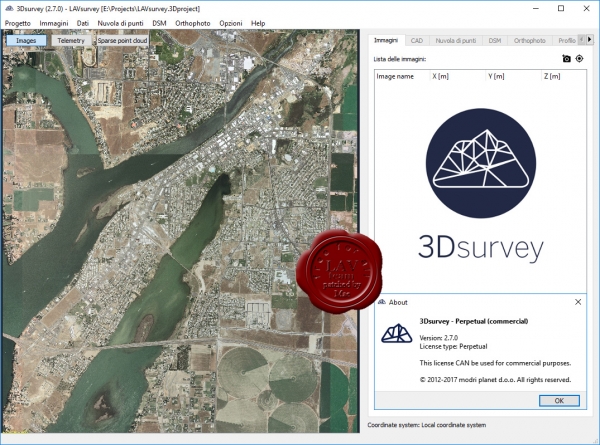
3Dsurvey is a software solution for land surveying data processing. Take a photo with any standard digital camera, import images into 3Dsurvey and produce your own orthophoto maps, digital surface models and calculate volumes faster and more easily. Data is processed automatically based on matching algorithms. Use our smart tools to be even more efficient.
|
| |
 Читать статью дальше (комментариев - 40)
Читать статью дальше (комментариев - 40)
| |
|
 |
 Автор: Williams Автор: Williams
 Дата: 20 августа 2018 Дата: 20 августа 2018
 Просмотров: 1 534 Просмотров: 1 534 |
| |
HONEYWELL UniSim Design R451
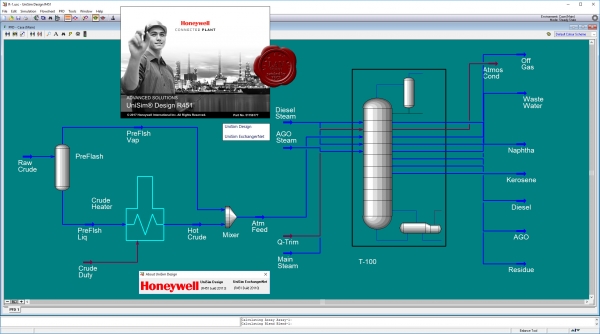
Honeywell’s UniSim Design Suite is an intuitive process modeling software that helps engineers create steady-state and dynamic models for plant design, performance monitoring, troubleshooting, business planning, and asset management. The process simulation market is under transformation. Triggered by technological advancements and new customer requirements, process simulation models, which have traditionally been desktop analysis and decision-making tools, are now leveraged into new high-value solutions, such as ”connected” operational monitoring. Find out more about how Honeywell delivers value to customers, with the UniSim Design’s new platform and refining offering.
|
| |
 Читать статью дальше (комментариев - 12)
Читать статью дальше (комментариев - 12)
| |
|
 |
 Автор: Williams Автор: Williams
 Дата: 19 августа 2018 Дата: 19 августа 2018
 Просмотров: 926 Просмотров: 926 |
| |
RIVERMorph Pro v5.2.0
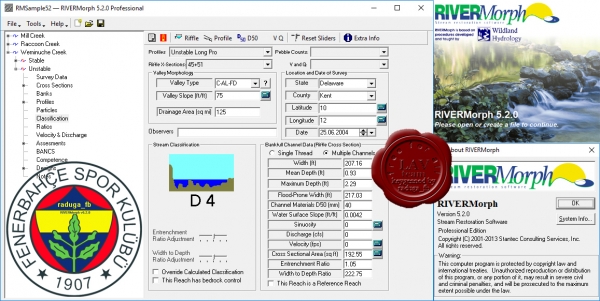
RIVERMorph is an efficient and consistent tool to analyze, store, sort and share your data. RIVERMorph is recommended as an essential tool for stream assessment, monitoring and Natural Channel Design. RIVERMorph significantly reduces the time required to access, analyze and design streams by putting tools you need right at your fingertips.
|
| |
 Читать статью дальше (комментариев - 12)
Читать статью дальше (комментариев - 12)
| |
|
 |
 Автор: Williams Автор: Williams
 Дата: 18 августа 2018 Дата: 18 августа 2018
 Просмотров: 1 395 Просмотров: 1 395 |
| |
TRL Junctions 9 v9.5.0.6896
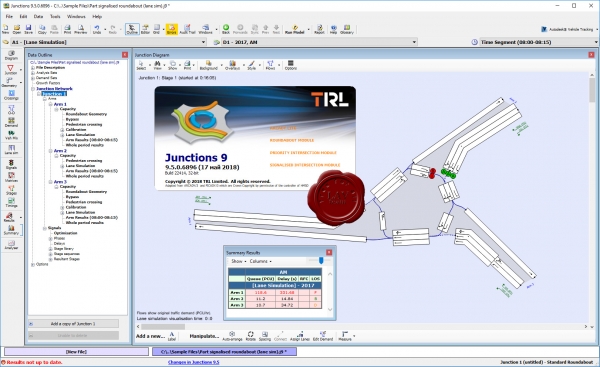
Junctions 9 is the latest version of TRL's industry-standard package for modelling roundabouts, priority junctions and simple signalised junctions.
Junctions 9 consists of ARCADY 9 (the Roundabout Module), PICADY 9 (the Priority Intersection Module), and OSCADY 9 (the Signalised Intersection Module), each of which is sold and licensed separately. All three modules use a shared user interface.
Based on over three decades of research and development, the ARCADY module is used to model and predict capacity, queues and delays at roundabouts.
Roundabouts are modelled using the well-established TRL/Kimber capacity relationships (the ARCADY Model), which take into account key roundabout geometries and intrinsically link roundabout geometry to driver behaviour and, in turn, to predicted capacities, queues and delays. North American users also have the option of using the HCM 2010 model to analyse roundabout designs.
PICADY is used for modelling priority-controlled junctions such as crossroads and T-junctions. PICADY 9 sees the implementation of additional models applicable to North America and allows users to setup and model Two-Way Stop Controlled (TWSC) and All-Way Stop Controlled (AWSC) intersections.
The OSCADY module, available in Junctions 9.5 onwards, is used to model signalised junctions and can generate optimised signal timings that minimise delay at the junction. Signals data can be copied from OSCADY 9 into TRANSYT 15 and vice versa, so that files started in OSCADY 9 can be transferred into TRANSYT 15 if more advanced functionality is required.
The Lane Simulation tool can be used to model junctions in a different way, using a simple simulation method. This can model effects that may be difficult to model otherwise, such as unequal lane usage at roundabouts, blocking back between linked junctions, circulating lanes at roundabouts and partially signalised junctions.
If using traffic survey information in Excel spreadsheet format, Junctions 9 can be set up to read data directly from the spreadsheets. This feature works across demand sets and time segments, can apply to turning counts and Heavy Vehicle information and is a great way of reducing data entry requirements. |
| |
 Читать статью дальше (комментариев - 5)
Читать статью дальше (комментариев - 5)
| |
|
 |
 Автор: Williams Автор: Williams
 Дата: 17 августа 2018 Дата: 17 августа 2018
 Просмотров: 289 Просмотров: 289 |
| |
Miri Technologies MiriMap2000+ v3.38.374
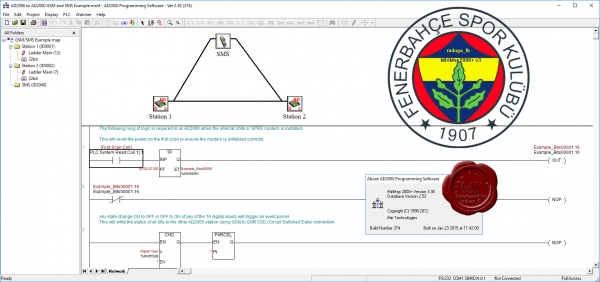
Miri Technologies provides a comprehensive range of professional services and radio based equipment solutions for remote infrastructure management. We have been providing products and services for wireless monitoring and control solutions since 1984 and our ongoing engineering commitment to product development and the pursuit of excellence will ensure that our wireless SCADA solutions will continue to be used by Public Utilities, Mining and all aspects of Industry for many years to come. We offer services for all aspects of radio based monitoring and control systems from initial Consultancy and System Design through to Manufacture and Commissioning.
What is MiriMap2000+? It is a software package that contains the application interface for programming the AD200x devices. One of the main functions of the AD200x devices is to send data from point A to point B via various communications paths (cable, radio, dialup, satellite, Ethernet, GSM etc.). This software sets up the communications ports, defines the memory variables, determines the method of transmission and the conditions that will allow this to occur (i.e. polled, periodic or on event). The software also transfers the configured parameters, the necessary operating code and communication protocol drivers into the AD200x device via the programming port. The added functionality of a Ladder Logic programming interface for writing PLC type logic functions has also been introduced into the MiriMap2000+ version of software. There is the added capability to set the AD200x devices up as data-logger units and a separate logger configuration interface has been included. The MiriMap2000+ software package uses a graphical interface to make the configuration process easier and more intuitive. MiriMap2000+ Version 4.00 and above no longer supports Windows versions earlier than XP due to Microsoft© itself no longer supporting these products. The software package does not allow configuration of the interconnected devices supplied by third parties such as PLCs. These must use the programming packages supplied by the manufacturer. |
| |
 Читать статью дальше (комментариев - 2)
Читать статью дальше (комментариев - 2)
| |
|
 |
 Автор: Williams Автор: Williams
 Дата: 15 августа 2018 Дата: 15 августа 2018
 Просмотров: 1 843 Просмотров: 1 843 |
| |
Veesus Arena4D & Arena4D Renderer v2.0 for Rhino 6
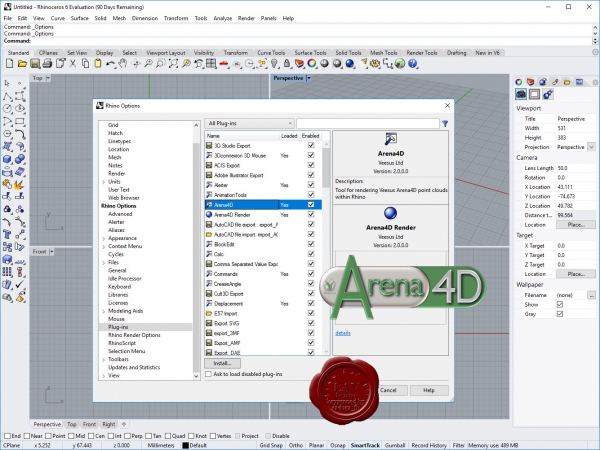
Arena4D is the name of our core product range and features client, server and plug-in applications. At the heart of all our applications is our cross platform point cloud rendering engine for viewing and editing large point cloud data sets. Whether you are an engineer, surveyor, site manager or end user, we have a solution to help you deal with the complexities of point cloud data.
|
| |
 Читать статью дальше (комментариев - 10)
Читать статью дальше (комментариев - 10)
| |
|
 |
 Автор: Williams Автор: Williams
 Дата: 14 августа 2018 Дата: 14 августа 2018
 Просмотров: 3 957 Просмотров: 3 957 |
| |
САПРОТОН NormCAD v10.4 x32+x64
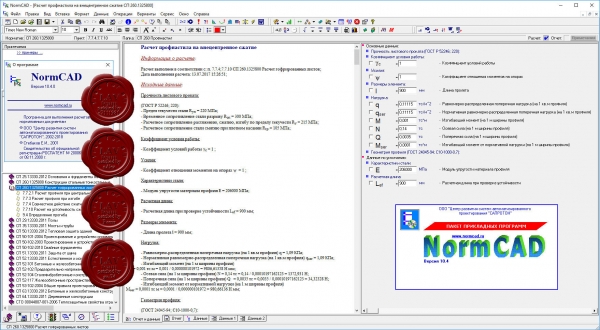
NormCAD выполняет расчеты строительных конструкций по СНиП и готовит проектную документацию для представления заказчику и в органы экспертизы:
- расчет стальных конструкций (расчет балок, колонн сплошного и составного сечения, профнастила и узлов ферм из гнутых профилей);
- расчет железобетонных конструкций (расчет балок, колонн, стен и плит: подбор арматуры, проверка сечений - в т.ч. тавровых и двутавровых, косое внецентренное сжатие, расчет круглых колонн и колонн с распределенной арматурой, трещиностойкость, проверка прогиба, расчет на смятие и продавливание);
- расчет каменных и армокаменных конструкций (проверка сечений - прямоугольных и тавровых на центральное и внецентренное сжатие, растяжение, срез, трещиностойкость и смятие);
- расчет фундаментов;
- теплотехнический расчет (сопротивление теплопередаче и паропроницанию стен, покрытий, перекрытий и светопрозрачных конструкций).
- другие строительные и машиностроительные расчеты.
Главное преимущество - на сегодня это единственная программа, в которой расчет оформляется в виде текстового документа (в формате Word), подобному созданному опытным конструктором вручную, что позволяет легко проконтролировать любую часть расчета.
О новом в версии 10.4 тут |
| |
 Читать статью дальше (комментариев - 26)
Читать статью дальше (комментариев - 26)
| |
|
 |
 Автор: Williams Автор: Williams
 Дата: 12 августа 2018 Дата: 12 августа 2018
 Просмотров: 934 Просмотров: 934 |
| |
KnowWare QI Macros 2018.07
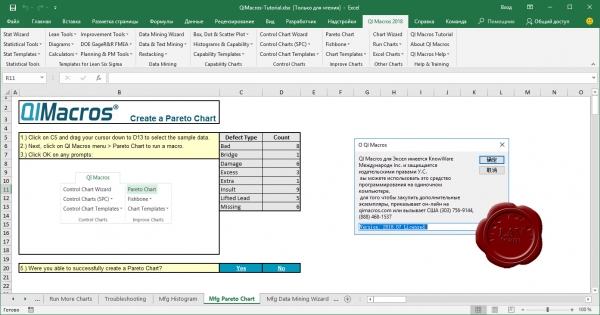
QI Macros is long on Six Sigma capabilities, with some Lean tools and techniques built in as well. Chances are many Green Belts and some Black Belts will be able to do everything they need with QI Macros and Excel. The familiar Excel interface reduces the learning curve and makes it a viable option for anyone who needs to create control charts, conduct statistical analysis or perform data manipulations.
More info. |
| |
 Читать статью дальше (комментариев - 3)
Читать статью дальше (комментариев - 3)
| |
|
 |
| ПОИСК ПО САЙТУ |
 |
|
 |
| КАЛЕНДАРЬ | | |
 |
| « Октябрь 2025 » |
|---|
| Пн | Вт | Ср | Чт | Пт | Сб | Вс |
|---|
| | 1 | 2 | 3 | 4 | 5 | | 6 | 7 | 8 | 9 | 10 | 11 | 12 | | 13 | 14 | 15 | 16 | 17 | 18 | 19 | | 20 | 21 | 22 | 23 | 24 | 25 | 26 | | 27 | 28 | 29 | 30 | 31 | |
|
 | |
| |
|